Hou Renzhi: A lifetime devoted to the study of Beijing
Known as a "Beijing expert", he made significant contributions to the preservation of ancient buildings and urban development in Beijing. He put forward the "three milestones of Beijing's urban planning and construction", advocated the protection of key sites including Tian'anmen Square, the Lotus Pond, Wanning Bridge, and Yuzao Pond, and clarified Beijing's founding date. He had a deep affection for the ancient city of Beijing. "The more I know Beijing, the more I love it," he said. "I have been studying the city all my life.”
He was Hou Renzhi, an academician of the Chinese Academy of Sciences, a famous historical geographer, and one of the founders of Chinese historical geography theories.
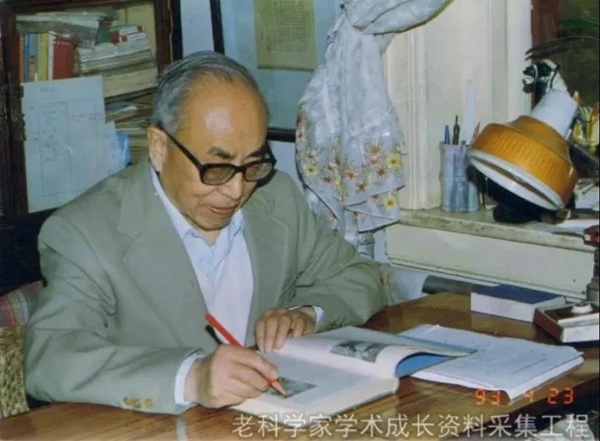
On April 23, 1993, Hou Renzhi works from home. [Photo/mmcs.org.cn]
A lifetime study of Beijing
In 1931, Hou came to Beijing for the first time. When he walked out of the station amid the twilight crowd, the majestic Zhengyangmen and the thick city wall emerged to greet him. At that moment, he seemed to be struck by a profound sense of historical reality, and a seed full of vitality was planted deep within him.
The following year, he was admitted to Yenching University and studied under Professor Gu Jiegang, a renowned historian and folklorist in modern China.
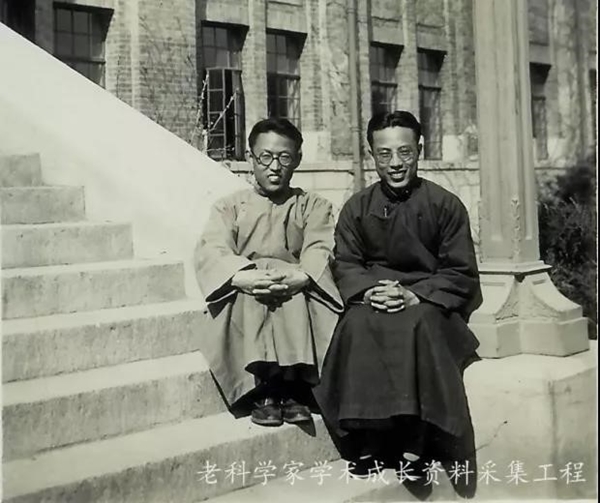
Hou Renzhi (right) and Hou Shuozhi pose at Tsinghua University in 1936. [Photo/mmcs.org.cn]
In August 1946, Yenching University dispatched Hou Renzhi to the department of geography at the University of Liverpool for further study under the renowned historical geographer, Darby. Hou's doctoral dissertation was "The Historical Geography of Beiping". After returning to China, he dedicated himself to integrating modern Western historical geography with China's traditional historical geography, and ultimately formed a historical geography with Chinese characteristics.
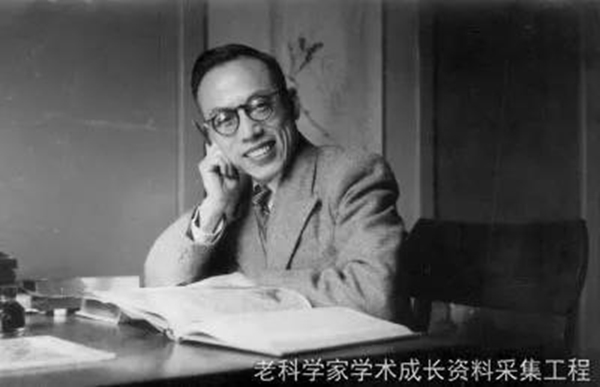
In 1947, Hou Renzhi at the University of Liverpool [Photo/mmcs.org.cn]
In the early 1990s, Hou proposed the "three milestones in Beijing's urban planning and construction history":
1. The first milestone is the Forbidden City, the central building complex of Beijing. It has a history of more than 570 years and is a major artistic masterpiece of Beijing's planning and construction during the feudal era, included in the World Cultural Heritage List.
2. The second milestone is the renovation of Tian'anmen Square, providing new meaning to the city's historic central axis, showcasing the special significance of inheriting the past and opening up the future, and marking the inception of a new era.
3. The third milestone is the construction of the Olympic Park, highlighting the capital's new look in the 21st century and marking Beijing's emergence as an international metropolis.
This theory is not only the culmination of Hou's academic achievements in Beijing studies but also a significant accomplishment in the historical and geographical research combined with Beijing's urban planning and construction.
In 1990, Hou made a reasonable inference through detailed research into a large number of historical materials, and proposed in the article Welcoming the 3,035th Anniversary of the Establishment of Beijing: "According to research findings, the establishment of Beijing can be traced back 30 centuries, and 1990 marks the 3,035th anniversary of the city's founding." His inference was widely accepted by the academic community. In 1995, to commemorate the 3040th anniversary of the city, Beijing erected the Jicheng Memorial Column in the Riverside Park outside Guang'anmen in Xuanwu district and invited Hou to inscribe "The Establishment of Beijing".
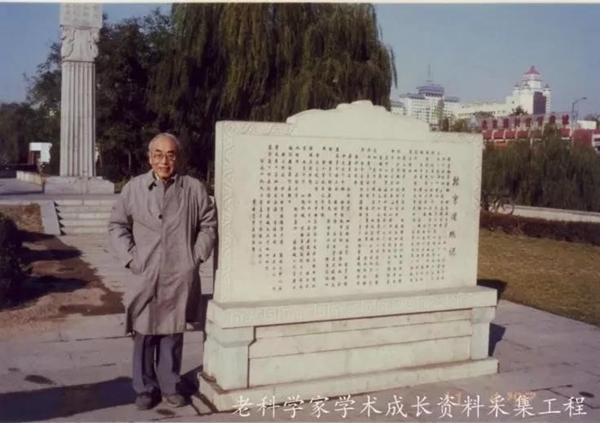
Hou Renzhi and "The Establishment of Beijing" tablet with the inscription written by himself. [Photo/mmcs.org.cn]
Protecting Beijing's "mark of life"
Hou devoted himself to the construction of the capital from a historical and geographical perspective, making essential contributions to the urban development of Beijing after the founding of the People's Republic of China. His efforts included the construction of significant facilities such as Tian’anmen Square, the Lotus Pond, Wanning Bridge, and Yuzao Pond. While promoting the renovation of old Beijing and the overall city planning, he also protected Beijing's ancient style.
In 1993, the construction of the Beijing West Railway Station was put on the agenda. The Lotus Pond, originally a large natural lake outside Guang'anmen, is one of the few extant relics from the Jin Dynasty (1115-1234) capital. At that time, the pond had dried up, and some proposed building the station directly on its site to avoid residential relocation and leverage the sunken terrain.
Realizing this was crucial for Beijing's ancient origin, even in his 80s, Hou inspected the site several times, researched historical documents, and put forward revision suggestions. Although the Lotus Pond had lost its role as a water source, he argued that eliminating such a historical relic would erase an aspect of Beijing's history. Hou asserted, "The Lotus Pond is the source of life in Beijing." Thanks to his efforts, the station project was moved 100 meters eastward, preserving the Lotus Pond.
During the construction, Hou observed the surroundings from the station roof, seeing the Lotus Pond covered in rubble and weeds. He suggested restoring the water source and historical appearance of the pond. In 2000, the Lotus Pond Park was opened, with Hou honored as the "No. 1 VIP" at the ceremony.
"One must never forget their past, and a historical and cultural city like Beijing must never forget its origin," Hou said.
China's first advocate for World Heritage
In 1984, Hou visited Cornell University in the United States and learned about the Convention Concerning the Protection of the World Cultural and Natural Heritage for the first time while communicating with several experts specializing in urban construction in Washington. The experts asked him why China, a country with a long history, invaluable cultural sites, and famous scenic spots, did not join the Convention to let the world know it better.
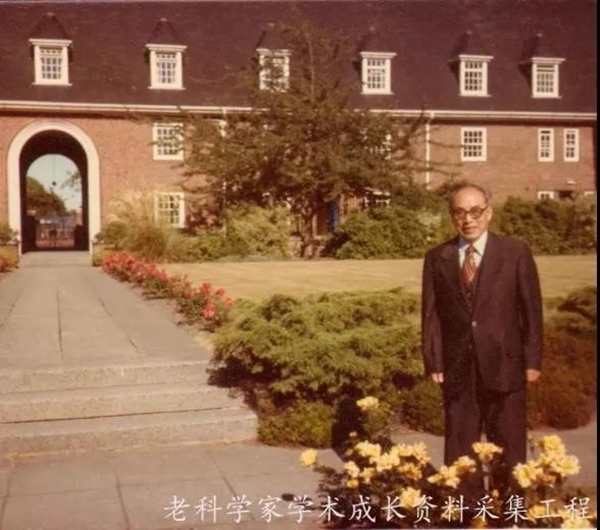
In 1984, Hou returns to his alma mater, the University of Liverpool. [Photo/mmcs.org.cn]
This question greatly shocked him. China has deep historical and cultural roots and fully meets the conditions for world heritage. Hou realized the importance of this issue. As a member of the National Committee of the Chinese People's Political Consultative Conference, he immediately drafted a proposal and obtained the signatures of three other CPPCC members.
In April 1985, this proposal was formally put forward at the Third Session of the Sixth National Committee of the CPPCC and was immediately adopted. The same year, the Standing Committee of the National People's Congress approved China's accession to the Convention in November, making it one of its signatories as of December 1.
In 1987, six cultural and natural heritage sites, namely, the Forbidden City, the Zhoukoudian Peking Man Site, the Taishan Mountain, the Great Wall, the Mausoleum of the First Qin Emperor (including the Terracotta Warriors and Horses), and the Mogao Grottoes in Dunhuang, were inscribed on the World Heritage List. As of 2018, a total of 52 cultural and natural heritage sites in China have been included in the list. These glorious achievements all stem from Hou's foresight and sagacity, realizing his ideal of "introducing China to the world".








